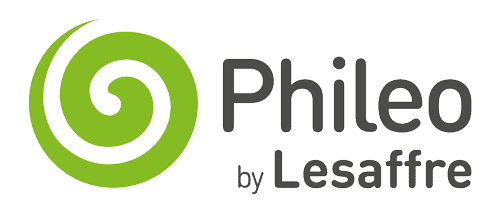
Removing Actisaf from herd’s diet resulted in return of acidosis…
"As soon as we started using Actisaf®, things improved…"About This Project
Callum Jamieson (pictured) farms in partnership with his father and two brothers, helping to manage a 400 strong Holstein Friesian dairy herd at Woodhead Farm. Milk is supplied to Arla and yields currently stand at an average of 11,500 litres/year, with butterfat at 3.9 per cent and protein, 3.3 per cent.
“The cows are indoors all year around so that we can carefully monitor their health and performance,” explains Callum. “Calving takes place throughout the year, with the aim for first service at 13 months. We are currently working to get first calving down to between 22 and 24 months.”
Cows are fed a TMR all year round, with a 50/50 split between forage (grass and whole crop silage) and concentrates. The farm makes use of large quantities of homegrown grass silage and aims for at least four grass cuts a year; reseeding leys every 4-5 years.
“We have an automated Wasserbauer Butler robot which runs up and down the feed passageways pushing up feed throughout the day,” continues Callum. “As well as pushing up feed, the robot also periodically distributes a small quantity of blend, which draws the cows forward to feed and helps maintain good intakes.”
In order to ensure high levels of milk production and maintain cow energy levels, the farm’s TMR is high in terms of starch and sugar content. Whilst beneficial in many ways, the formulation of the diet can result in problems with acidosis.
“We used to find that some cows had very loose dung and were being affected quite badly with acidosis, which obviously had a negative impact on milk yields,” explains Callum. “I know how important it is for feed and the rumen environment to remain as consistent as possible to help maximise feed utilisation. It wasn’t a great situation and was one we actively looked to resolve.”
In 2015 Ros Hughes, from Kite Consulting, started to work with Callum and suggested feeding Supersaf, which contains Actisaf® premium probiotic yeast, to help combat the acidosis problems.
“As soon as we started using it, things improved,” Callum explains. “We stopped having problems with acidosis, cows seemed much more settled and milk butterfat levels also started to rise.”
However, in the spring of 2016, the decision was made to remove Supersaf from the herd’s rations, largely due to the continuing pressure of low milk prices.
“We only ended up taking Supersaf out of the diet for about a month,” continues Callum. “It soon became apparent that without it, we were going to have the same old problems with acidosis. As soon as we reintroduced the supplement, acidosis settled down again and it made us realise that whilst it is an extra cost on our total feed bill, it is one that is certainly worthwhile.”
Callum currently feeds cows 70g of Supersaf a day and doesn’t plan to take it out of their diet again.
“Supersaf gives us a brilliant control of acidosis, and by doing so allows us to continue feeding a high energy diet that not only helps maintain strong milk yields but is hopefully also going to help with fertility,” concludes Callum. “If cows have more energy and aren’t being held back, we are hoping that over the coming year or so we will see an improvement in conception and calving rates.”






